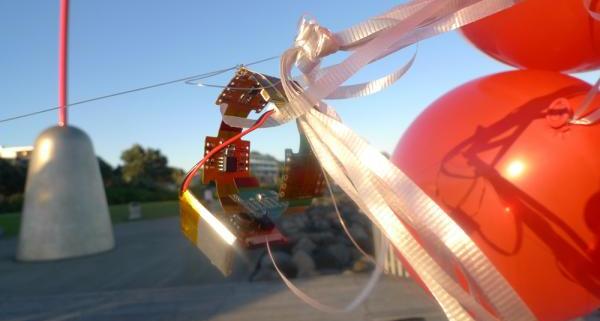Mauri Wai Mauri Ora – Jo Tito
Mauri Wai Mauri Ora, 2011, Jo Tito (Iwi – Tribes: Taranaki, Ngāti Pikiao, Tūhourangi-Ngāti Wāhiao), Taranaki stone & acrylic paint
Jo Tito Is a Māori artist, passionate about sharing the importance of connection and helping people reconnect to who they are.
A self-taught photographer, she is also a multi-media artist who combines storytelling, nature and technology to share her messages. Working at the grass roots level of community through health and education initiatives, has enabled her to use art as a tool for change and to see the positive affects that connection and storytelling can have on a community.
The work for ISEA presents a “mauri” stone and explores a Māori concept of “energy” or “mauri” bringing the physical stone as an art work into the space. The stone carries the energy of the land from which it comes, and the many stories and energies that have been gathered prior to it’s journey to ISEA. The stone also incorporates all the works that are presented in this exhibition.
The rock has been formed by water and shares stories of connection to who we are; wai being the Māori word for water and also used when one asks, “ko wai au – who am I?” With the understanding of water as being part of who we are, we can perhaps better understand our connection to the environment and the importance of water as an essential element to the survival of our planet and people.
Jo Tito CV and bio
Jo Is a 37 year old creative entrepreneur and artist who is passionate about art and bringing about change in the world. An innate connection to the land and environment inspires her creativity and the stories she tells through her work. She has been a photographer for the past 16 years and is also a multi-media artist working in painting, sculpture and digital storytelling. She also has a background in health and education and has worked at the grass roots level of community using art as a tool for change.
Connections and relationships are important to her and are at the heart of everything she does. Over the past 10 years, she has have had the privilege of working with some of the most talented artists from around the world through overseas travel, exhibitions, festivals and gatherings.
RECENT EXHIBITIONS
2011 Floating Land and Dreaming Festival – Artist in residence with international artists – Brisbane, Australia
Documentary of stories for Puke Ariki Museum exhibition – What If?, Taranaki
He Iwi Karioi exhibition currently showing at Tairawhiti museum – moving image installation, Gisborne
SCANZ 2011: Eco sapiens art residency, Taranaki
2010 Nga Manukura Maori midwives photographic project – photography and creation of digital stories for Auckland District Health Board
Co-director, Photographer & Editor for A Fire Burning a feature documentary by Flair Films
2009 Director of documentary – Iwirakau at the Tairawhiti Museum, Gisborne
Dreaming Festival, Brisbane Australia – indigenous artists research
2008 Aotearoa delegation to the 10th International Festival of Pacific Arts, Pagopago- America Samoa for digital storytelling & photography
Creation of digital stories for Nga Rama e Whitu exhibition, Gisborne
Travel to the Dreaming festival, Brisbane Australia – indigenous artists research
Sponsored trip to Indonesia by EngageMedia Australia for a gathering of software developers and video activists conference
2007 Author, researcher and editor of Matarakau – healing stories of Taranaki
Solo exhibition at the Thinkspace Gallery in Downtown Phoenix, Arizona USA
Digital storytelling workshop at Scotsdale Community College Arizona USA
Invited artist to the Gisborne Garden Artfest 2007, Gisborne
2006 Curator, storyteller & photographer of Wahine exhibition a b & w photographic exhibition by eight Maori women living in Taranaki at Nga Manu Korero – Opunake, Taranaki; Patea, Taranaki; and Hauiti marae Tolaga Bay, East Coast
Parihaka International Peace festival – exhibitor
Invited artist to the Gisborne Garden Artfest 2006
Ono Pacific Arts festival – invited artist for an exhibition of paper works with Sheynne Tuffery, Christchurch art section
Sept Selected artist for Rotorua artists exhibition at the Rotorua Museum
July Nga Manukura exhibition, Rotorua – exhibitor
July “He Puna Korero” Taranaki arts festival – emerging Maori artists exhibition










